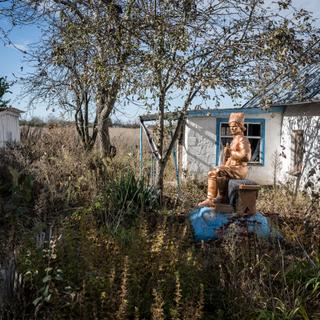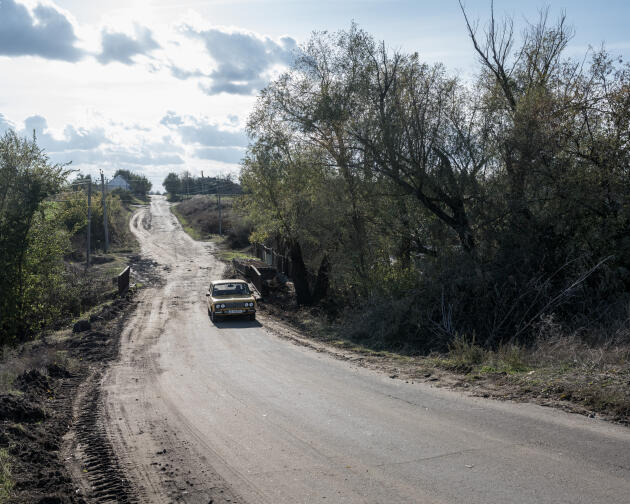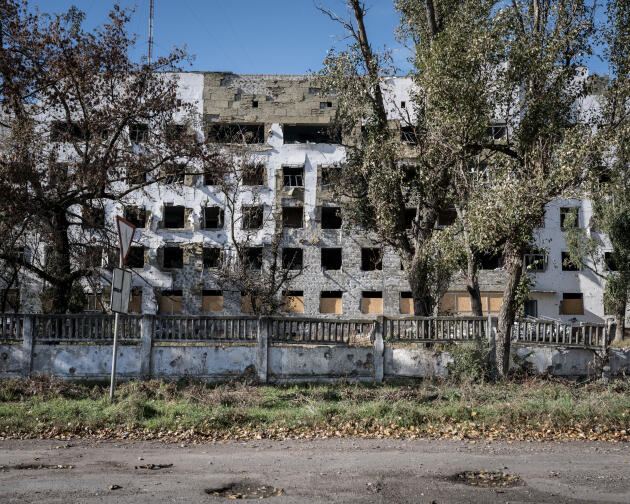


Nestor Makhno, the anarchist of the Ukrainian countryside
Long ReadAfter the 1917 Russian Revolution, this peasant's son became a feared wartime leader and a celebrated figure of anarchism, even in Paris, where he died in 1934. Since Russia's invasion in February 2022, his surprising story has been brought out of oblivion and turned into a model of resistance by some Ukrainians.
There are mice all over. They've fled the fields plowed by mortar fire and nibble away at packets of corn, buckwheat from cupboards, foam from mattresses, old paper... It's just the latest disaster for Hulyaipole's last remaining residents – 2,000 people who no longer have the age or means to move or rent an apartment in Zaporizhzhia, the nearest big town. "As I said to my wife: 'We used to have the orcas [the Russians], now we have the mice,'" sighed Sergei Levcheko, a local carpenter. When night falls, they sneak into the cellars to climb onto the makeshift beds of those who haven't been evacuated.
Few roofs are still standing in this frontline town. Not a single shop is open and only humanitarian convoys patrol. The sound of the incessant exchanges of fire taking place a few kilometers away can be heard in the background. A cyclist sometimes zooms by, his saddlebags full of potatoes. Occasionally, the shadow of a military truck or a stray dog is seen. "I don't even go back there to look after my house anymore," said Irina Chtepa, a former midwife from Hulyaipole who has taken refuge in Zaporizhzhia. "My mother is in hospital. Who will look after her if I die? Besides, my dog Nick died of a heart attack after being shot by an S-300. I've got no one left there."


Before the war, Hulyaipole ("field of freedom," in Ukrainian) had a population of 23,000 and had long been a busy, bustling town. It's a town with historic crossroads, where the Donbas roads to Donetsk, Dnipro and Zaporizhzhia meet. That's why the Russians shelled it on March 4, 2022, and why the Ukrainian army did everything in its power to prevent it from falling into enemy hands. Hulyaipole remained Ukrainian – but for whom? Corrugated iron sheets wail in the deserted streets. On Heroes of the Ukraine Square, formerly Lenin Square, a billboard clatters in the wind.
Yet one minor miracle did occur in this ghostly scene. Nestor Makhno stands firm in Hulyaipole. The two statues of this anarchist war leader, who was born here in 1888 and died in Paris in 1934, are still standing. The first, in the purest post-Soviet kitsch tradition, watches over the courtyard of his family home, whose roof was blown off in early October. The other, completely gilded, still stands in the center of the city at the foot of the devastated Palace of Culture. Soldiers have planted a Ukrainian flag between the gutted sandbags that are supposed to protect Makhno. It's their tribute to this peasant who, after the Russian Revolution of 1917 and as his country was plunged into civil war, led with his army of insurgents a fierce guerrilla war against the Austro-German occupiers, and then against the troops who remained loyal to the Tsar – before turning against his Bolshevik allies, who betrayed him as soon as the "white" threat disappeared. He summed it up in his own way: "Beat the whites until they turn red, and beat the reds until they turn white."
You have 90% of this article left to read. The rest is for subscribers only.
